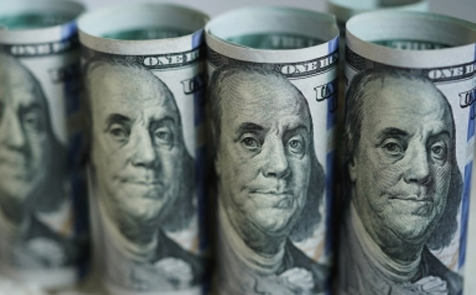India’s forex kitty surges to new all-time high of $648.56 bn
Mumbai, April 12 (IANS) India's foreign exchange reserves went up by $2.98 billion during the week ended April 5 to scale a new all-time high of $648.562 billion, data released by the RBI showed on Friday.

This is the seventh consecutive week marking a jump in the overall reserves. The forex kitty had increased by $2.95 billion during the preceding week ended March 29, after notching a cumulative $26.5 billion rise in the previous five weeks.
Gold reserves, which also form part of the forex kitty held by the RBI, shot up by $2.398 billion to $54.558 billion during the latest week, while foreign currency assets increased by $549 million.
The Special Drawing Rights (SDRs) were up by $24 million to $18.17 billion.
RBI Governor Shaktikanta Das referred to the record foreign exchange reserves as a reflection of the strength of the Indian economy.
"It is our prime focus to build a strong umbrella, a strong buffer in the form of a substantial quantum of forex reserves which will help us when the cycle turns, or when it rains heavily," Das said while unveiling the first monetary policy review of the current financial year that began on April 1.
Rising foreign exchange reserves are a positive sign for the economy as they reflect an ample supply of dollars that help strengthen the rupee.
An increase in the foreign exchange reserves gives the RBI more headroom to stabilise the rupee when it turns volatile. This is because the RBI intervenes in the spot and forward currency markets by releasing more dollars to prevent the rupee from heading for a free fall.
Conversely, a declining forex kitty leaves the RBI less space to intervene in the market to prop up the rupee.
India's forex reserves, including the central bank's forward holdings, can now cover more than 11 months of imports, which is a two-year high.
The RBI Governor also said the Indian rupee remained largely range-bound as compared to both its emerging market peers and a few advanced economies during 2023-24 and was the most stable among the major currencies during this period.
“The depreciation of Indian rupee at 1.4 percent against the US dollar in 2023-24 was lower as compared to emerging market peers like Chinese yuan, Thailand baht, Indonesian rupiah, Vietnamese dong, Malaysian ringgit and a few advanced economy currencies like Japanese yen, Korean won and New Zealand dollar,” he said.


 Your Details
Your Details Your Details
Your Details